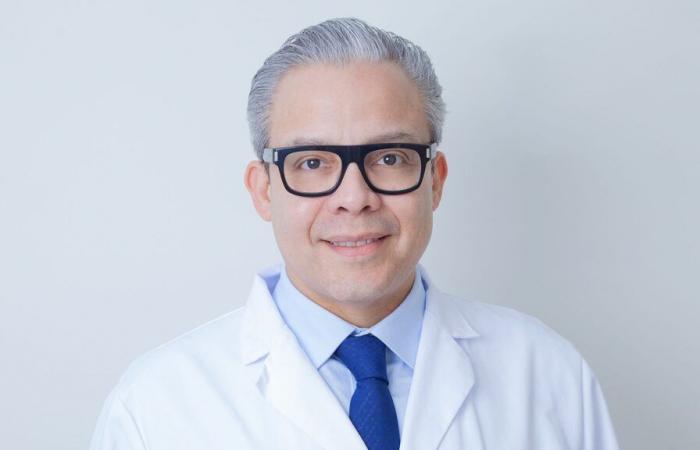In recent years, medicine has advanced significantly in the search for less invasive treatments for Prostate cancerone of the most common diseases in men. In fact, according to the data of the Spanish Society of Medical Oncology (SEOM), prostate cancer will be the most diagnosed in men in 2025, with 32,188 new casesequivalent to 1 in 8 men. Most diagnoses will be made in over 65 years, and the disease will continue to be the third cause of cancer death in men.
In this context, focal therapy with High intensity focused ultrasound, HIFU, It has consolidated as an innovative alternative that allows the affected area to be treated exclusively, minimizing the side effects associated with more aggressive treatments. This approach better preserves the quality of life of patients by reducing the risk of urinary incontinence and erectile dysfunction, usual problems after radical surgery or radiotherapy.
Unlike conventional treatments such as radical prostatectomy or radiotherapy, Hifu It allows exclusively to treat the area affected by the tumor with a millimeter precisionsignificantly reducing the side effects and preserving the patient’s quality of life. To learn more about this therapeutic option, Oksalud interviews Dr. Rafael Sánchez-Salas, a specialist in the application of this technique that explains in detail how the procedure is developed, how many sessions are usually necessary and what is the recovery process.
Question.- Could you explain what exactly the Hifu Focal Therapy is exactly what precision level it reaches?
ANSWER.- Focal therapy with HIFU (high intensity focused ultrasound) is a minimally invasive treatment for localized prostate cancer. Use high frequency ultrasound waves to generate heat and selectively destroy the cancerous tissue without incisions. Its precision is millimeter, which allows only the affected area to preserve the surrounding healthy tissue.
Q.- What is the difference with other conventional treatments for prostate cancer?
R.- Unlike radical prostatectomy or radiotherapy, which treat all the prostate, focal therapy with HIFU only treats the region affected by the tumor. This significantly reduces the side effects associated with radical treatments, such as urinary incontinence and erectile dysfunction. HIFU is the most used energy in focal therapy but there are other energies available as irreversible electroporation or cryotherapy.
Q.- How many sessions must be done and how long each one?
R.- In most cases, a single Hifu session is sufficient. The procedure lasts between 1 and 3 hours, depending on the size and location of the tumor. In some cases of recurrence or multifocal disease, it could be considered a second session.
Q.- What is the recovery period after the intervention with HIFU?
R.- Recovery is rapid compared to radical treatments. Most patients can resume their daily activities in a few days. During the first weeks, the temporal use of an urinary probe is common and minor symptoms such as discomfort or increase in urinary frequency can occur.
Q.- What advantages does HIFU focal therapy offer compared to radical prostatectomy in terms of preservation of sexual and urinary function? How long does a patient usually take to recover both functions?
R.- HIFU offers greater preservation of urinary continence and erectile function compared to radical prostatectomy. Approximately 90% of patients maintain continence and between 60-80% retain the erectile function, depending on the location of the tumor and the age of the patient. Functional recovery can take between weeks and some months.
Q.- What are the criteria for determining whether a patient with prostate cancer is a suitable candidate for Hifu Focal Therapy?
R.- The main criteria include:
- Located prostate cancer (Gleason ≤7 [3+4]PSA generalmente <15 ng>
- Visible tumors in magnetic resonance and confirmed by directed biopsy.
- Without evidence of metastasis or significant extracapsular affectation.
- Sufficient life expectancy to benefit from treatment.
Q.- What patients benefit more from this treatment?
R.- Patients with intermediate risk prostate cancer, with focused lesions, seeking a less invasive option and wishing to preserve their quality of life, avoiding the side effects of radical treatments. It can also be an alternative for patients not suitable for surgery or radiotherapy.
Q.- Are there long-term studies that support the effectiveness and safety of Hifu Focal Therapy compared to more invasive treatments?
R.- Yes. There are multiple studies that have shown that focal therapy with HIFU offers good medium and long term oncological control in well -selected patients. The studies suggest survival rates similar to radical treatments in low and medium risk cancers, with lower rates of incontinence and erectile dysfunction. We would be talking about 80% disease control based on PSA monitoring, magnetic resonance and control biopsy. Focal therapy seeks to change the paradigm of “cure at any price” and proposes a disease control to maintain the quality of life.
Q.- How is Icua preparing to offer this innovative treatment on a regular and accessible way to patients in Spain?
R.- ICUA is incorporating focal therapy with HIFU within its treatment strategy for prostate cancer, ensuring access to avant -garde technology, training specialists in this technique and developing protocols to select patients who benefit the most. In addition, he hopes to participate in clinical research to continue optimizing the results and guaranteeing safe and effective access to this therapy in Spain.






